Search Results

Jayson
On October 29, 2023, I was diagnosed with acute myeloid leukemia (AML) at the age of 24. Before cancer, I moved through life without a care in the world, living each day like tomorrow was guaranteed. That all changed in an instant.

Pilar
My name is Pilar, and I am 34 years old. I used to work for the workforce board of Philadelphia, working with youth, until I was diagnosed with acute myeloid leukemia (AML) back in October 2020. It has been a hard battle, but I am positive and blessed to have the support of my family and friends. Additionally, I was very fortunate my sister, Marcela, was a match to be my donor.
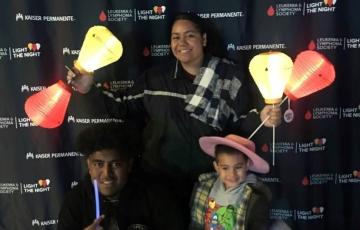
Rose
My brother Hopoate is a leukemia survivor. At the young age of 2, he was diagnosed with acute lymphocytic leukemia (ALL) and finished his chemotherapy when he was 4-1/2 years old. He has been cancer-free for about 17 years now. He is now 21 and thriving.

Anna
As many of you know, in 2015 our daughter Anna was diagnosed with acute lymphoblastic leukemia (ALL). She had a very successful treatment, and God answered my wife and my prayers. As of March 2023, Anna has been cancer-free for five years making her a cancer survivor. On October 21, Aimie, Anna, and I will participate in the Light The Night (LTN) walk for The Leukemia & Lymphoma Society (LLS). Funds raised through LTN allow LLS to fund treatments for patients who have blood cancer. As you can imagine, this cause is very special to Aimie and me.

Wendell
Wendell Ison was diagnosed with chronic lymphocytic leukemia (CLL) on June 6, 2006. It was through his own battle that he decided to create the team known as "Wendell's Warriors" as a way to give back and make a difference in people's lives by raising money for the Leukemia Lymphoma Society (LLS).
Deana
In May 2008 at nine years-old, I was diagnosed with acute lymphoblastic leukemia (ALL). I went from being told I had a 10 day stomach virus to being told I had leukemia. The doctors said told I didn't come in when I did, I could of lost my life.
A year went by, and I was stuck in the hospital missing out on family and important events. I even had my tenth birthday in the hospital, but I was too sick to enjoy it.
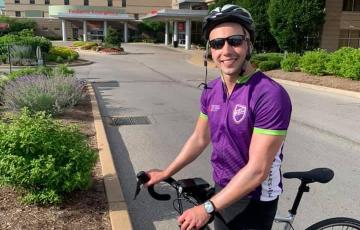
Joey
Joey Renick is a three-time acute lymphoblastic leukemia (ALL) survivor. He was first diagnosed at the age of 3, then 18, and again at 22. Joey has received years of chemotherapy, radiation, and a bone marrow transplant. Since receiving his bone marrow transplant in June 2016, Joey has married his wife Caylee, completed nursing school, began and continues to work as a bone marrow transplant nurse, and will be a dad soon.
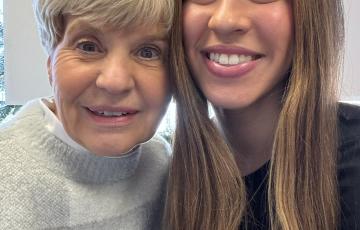
Sydney
My grandfather, Michael, passed away from leukemia in 1991. While I never had the pleasure of meeting him, I have always considered him to be my guardian angel. My grandmother and best friend, Patrice, has been a loyal advocate, supporter, and donor to The Leukemia & Lymphoma Society (LLS) ever since his passing. Additionally, she served as vice president for two years and president of LLS for four years. We love how committed LLS is to the research and care of those with blood cancer.

Geoff
I was diagnosed with acute myeloid leukemia (AML) on April 13, 1995, at Arlington Hospital (now VHC Health) and was hospitalized there for 32 days for chemotherapy. I received a second round of chemotherapy (high-dose) at Memorial Sloan-Kettering Hospital a few weeks later. Afterward, I received an autologous stem cell transplant at Sloan Kettering. I was discharged on August 13, 1995, and readmitted in late August for two days for an infection. I have been cancer-free since then.

Julian
I was a 10-year-old kid when I was diagnosed with leukemia. I was a happy, energetic kid who loved being outside and was a straight-A student. However, my whole childhood was put on hold indefinitely once I had cancer. Rather than having sleepovers at my friend’s houses, I was sleeping over at the hospital. It was hard to lose my energy, smile, confidence, and hair as treatment took over my life. It was really hard to understand as I was just a kid getting injections, procedures, chemotherapy, and surgery without truly understanding why.
Follow-Up Care
Click here for information about follow-up care, including what to expect, long-term and late effects of treatment, survivorship clinics, and other resources such as The National Comprehensive Cancer Network (NCCN) treatment guidelines.
Use the Survivorship Workbook to collect all the important information you need throughout diagnosis, treatment, follow-up care and long-term management of a blood cancer.
Treatment Outcomes
In some people with PV, the disease remains stable for many years. In many people, life expectancy is the same as it would be if they did not have PV. With careful medical supervision and therapy, PV can usually be managed effectively for a long time. In some cases, however, it may progress to another type of blood disease, such as myelofibrosis or acute myeloid leukemia.
Treatment Outcomes
A few decades ago, there were very low cure rates in both children and adults diagnosed with ALL. Today, childhood ALL has one of the highest cure rates of all childhood cancers, approaching 92 percent for children younger than 15 years and more than 94 percent for children younger than 5 years.

Sarah
I am the mother of Madelynn, aka Maddie, who was diagnosed with biphenotypic acute leukemia (BAL) on March 13, 2023, following months of illness initially thought to be a sinus infection. Despite multiple doctor visits and two trips to the emergency room, it wasn’t until Maddie’s condition worsened that she received the correct diagnosis, which involved both acute lymphoblastic leukemia (ALL) and acute myeloid leukemia (AML) with the Philadelphia chromosome. Maddie immediately began an aggressive chemotherapy regimen and spent the first month of her treatment in the hospital.
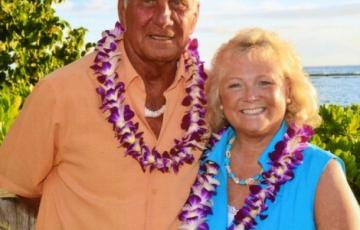
Sue
It’s 2015 and I am doing my happy dance! It’s been 20 years since my bone marrow transplant for my chronic myeloid leukemia (CML) and I am still here enjoying what life brings my way.

George
My awareness of The Leukemia & Lymphoma Society (LLS) began years ago when a close family member was diagnosed with leukemia. In the wake of such devastating news, I felt compelled to lend a hand. I am honored to join the LLS family in their fight to cure blood cancers.

Nanci
I was diagnosed with chronic myelogenous leukemia (CML) in January 2009. My doctor said the average life span was three years if not for the newer drug called Gleevec, a drug that The Leukemia & Lymphoma Society (LLS) had been involved in the research of it. I started on Gleevec in February, but after a week I was taken off it to bring my immune system back up. Back on Gleevec, I reached remission in July 2009. I now have been in remission for 12½ years. I now take the generic brand due to the cost.

Kaidyn
Kaidyn was only six months old when he was diagnosed with acute myeloid leukemia (AML). About two months later, he received a bone marrow aspiration and was started on chemotherapy. Over the next ten months, Kaidyn was in and out of Children's Hospital of Oakland. It was there that he took his first steps, said his first words, and even flirted with every nurse in the oncology unit! Kaidyn is now a healthy three-year-old boy with an ear-to-ear grin who participates in his local Light The Night Walk each fall.
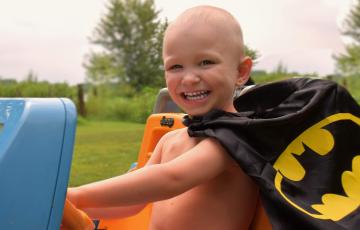
Reid
We just wanted to reach out and say how much The Leukemia & Lymphoma Society (LLS) has helped us. From attending Light The Night (LNT), to getting a blanket in the mail, to receiving funds when I couldn't work to keep Reid safe from the pandemic. Anytime I have needed assistance or reached out, the staff I have chatted with are so amazing and make you feel like you're so included and important. You have made us feel loved and gave us hope and inspiration. Reid was diagnosed at 2 years old, and he is almost done with B-cell acute lymphoblastic leukemia (B-cell ALL) treatment.
Jeff
A little over two years ago, I was diagnosed as having chronic lymphocytic leukemia (CLL). I was shocked and devastated by the news and immediately began seeing an oncologist. My team from the cancer center has been uplifting, positive, and supportive from the very beginning! They have been successfully treating my cancer and have taught me not to fear my disease.

Story
Story was diagnosed with biphenotypic leukemia (BAL) in July 2010. She was four years old at the time. She was treated with two rounds of “high-risk protocol” chemo. She was in complete remission after 60 days. However, because of her particular diagnosis, we were advised that she needed a bone marrow transplant to have the best chance of long-term remission. Her older sister, Lyric, who was just six at the time, was a perfect match.

Rick
Rick Ostroff and his family have a legacy of philanthropy with a heartfelt connection to a disease he never had. During the first three years of his life, he spent time on the leukemia floor of Children’s Hospital in Boston but eventually was found to have the critical illness of gamma globulin anemia rather than then-fatal leukemia.
Follow-Up Care
Click here for information about follow-up care, including what to expect, long-term and late effects of treatment, survivorship clinics, and other resources such as The National Comprehensive Cancer Network (NCCN) treatment guidelines.
Use the Survivorship Workbook to collect all the important information you need throughout diagnosis, treatment, follow-up care and long-term management of a blood cancer.
Splenectomy
The spleen is an organ on the left side of the body, near the stomach. CLL cells can collect in the spleen, causing it to become enlarged. Sometimes, the spleen becomes so large that it presses on nearby organs, causing pain. Also, an enlarged spleen may lower a person’s blood cell counts to dangerous levels. An operation to remove the spleen is called a splenectomy. Splenectomy is helpful for select patients. The operation may reduce pain and help improve blood counts.
Martin
I have a unique story. In 1978 after being married for three weeks, my wife was diagnosed with acute lymphoblastic leukemia (ALL). Seven months later she passed away.